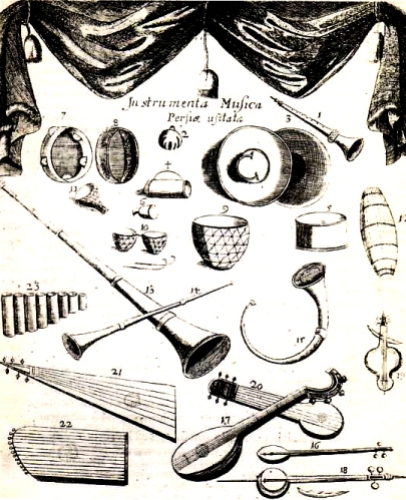“Fifteen musicians sat in a crosswise position on both sides, and thus in a broken row divided into two groups; these in turn sounded together a strange tune with reed-instruments, cymbals and various stringed instruments; drums struck with a light finger, and less often the human voice, joined in with them.
Perhaps you expect my opinion about this ensemble? A noise rather than an ensemble, it was unencumbered by any rules of harmony, but nevertheless not confused nor disagreeable; in truth if I except the singer’s voice, it was pleasant enough, and subordinated to the extent that it did not disturb the conversations or the proceedings in the assembly, but rather with a certain strangeness in its varied but low-level sound caressed the ears and spirits of the seated company with its sweetness.”
So wrote Engelbert Kaempfer in Amoenitates Exoticae (1712), which documented his observations in Persia in the late 17th century. Excerpts from the book are translated in Time, place and music: An anthology of ethnomusicological observation c. 1550 to c. 1800 by Frank Harrison (Amsterdam: Fritz Knuf, 1973).
Above, a plate from the original publication; below, a modern-day performance of Persian court music.
Related articles:




Pingback: Entertaining the shōgun | Bibliolore
Meanwhile, nearly a century ago, Henry George Farmer was also fascinated with ‘Arabian music’:- http://prism.talis.com/rcs/items?query=author%3Afarmer+AND+%28arab+OR+arabian+OR+turkish+OR+moorish%29&offset=0